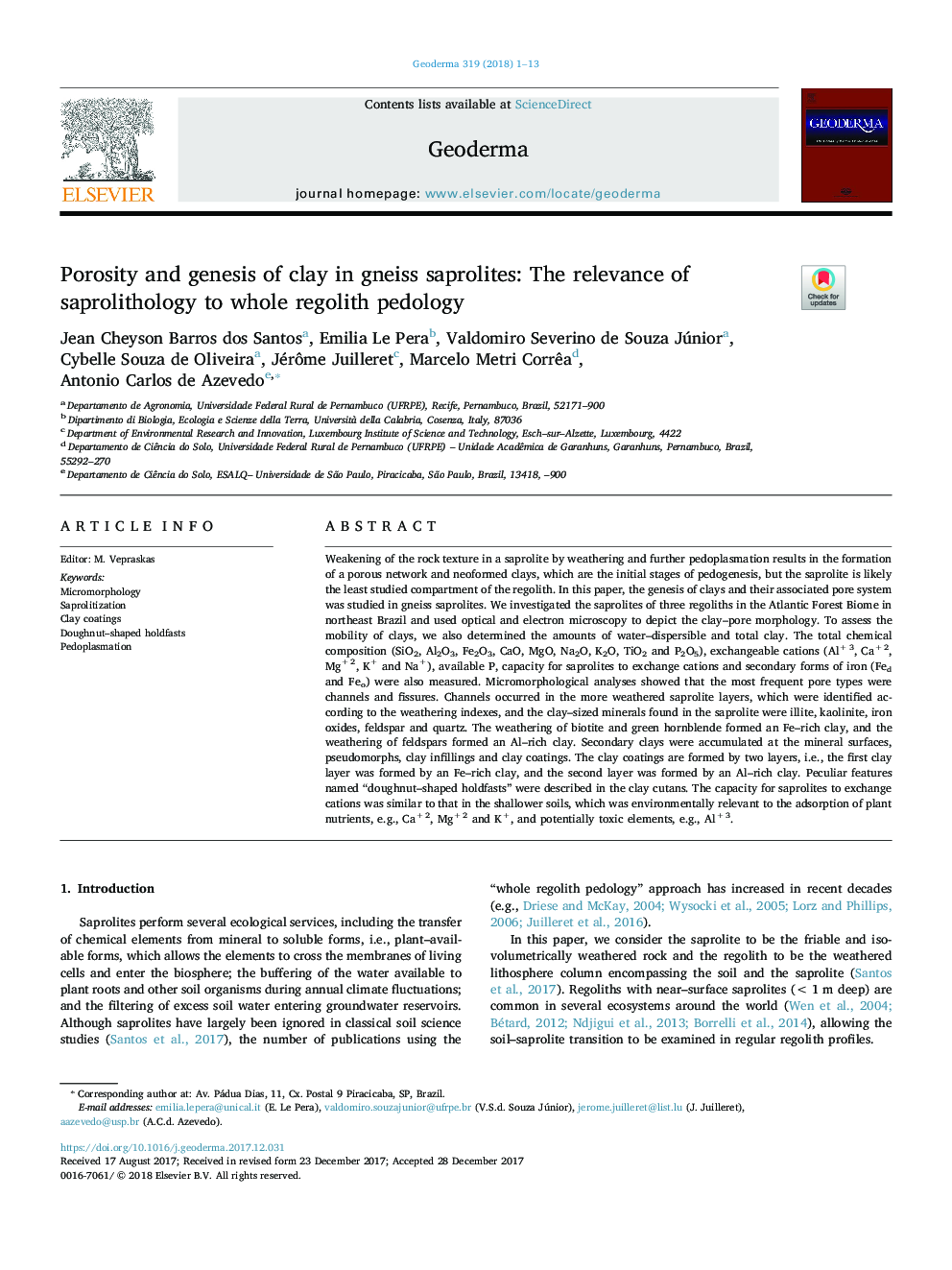| کد مقاله | کد نشریه | سال انتشار | مقاله انگلیسی | نسخه تمام متن |
|---|---|---|---|---|
| 8894139 | 1629398 | 2018 | 13 صفحه PDF | دانلود رایگان |
عنوان انگلیسی مقاله ISI
Porosity and genesis of clay in gneiss saprolites: The relevance of saprolithology to whole regolith pedology
ترجمه فارسی عنوان
پوسته و ژن رس در خاک رس گنوس ساب گراس: ارتباط متابولیسم با کلنی
دانلود مقاله + سفارش ترجمه
دانلود مقاله ISI انگلیسی
رایگان برای ایرانیان
کلمات کلیدی
میکرومورفولوژی، صرع زدایی، پوشش های خاک رس، قهرمانان پدپلاستی،
موضوعات مرتبط
مهندسی و علوم پایه
علوم زمین و سیارات
فرآیندهای سطح زمین
چکیده انگلیسی
Weakening of the rock texture in a saprolite by weathering and further pedoplasmation results in the formation of a porous network and neoformed clays, which are the initial stages of pedogenesis, but the saprolite is likely the least studied compartment of the regolith. In this paper, the genesis of clays and their associated pore system was studied in gneiss saprolites. We investigated the saprolites of three regoliths in the Atlantic Forest Biome in northeast Brazil and used optical and electron microscopy to depict the clay-pore morphology. To assess the mobility of clays, we also determined the amounts of water-dispersible and total clay. The total chemical composition (SiO2, Al2O3, Fe2O3, CaO, MgO, Na2O, K2O, TiO2 and P2O5), exchangeable cations (Al+Â 3, Ca+Â 2, Mg+Â 2, K+ and Na+), available P, capacity for saprolites to exchange cations and secondary forms of iron (Fed and Feo) were also measured. Micromorphological analyses showed that the most frequent pore types were channels and fissures. Channels occurred in the more weathered saprolite layers, which were identified according to the weathering indexes, and the clay-sized minerals found in the saprolite were illite, kaolinite, iron oxides, feldspar and quartz. The weathering of biotite and green hornblende formed an Fe-rich clay, and the weathering of feldspars formed an Al-rich clay. Secondary clays were accumulated at the mineral surfaces, pseudomorphs, clay infillings and clay coatings. The clay coatings are formed by two layers, i.e., the first clay layer was formed by an Fe-rich clay, and the second layer was formed by an Al-rich clay. Peculiar features named “doughnut-shaped holdfasts” were described in the clay cutans. The capacity for saprolites to exchange cations was similar to that in the shallower soils, which was environmentally relevant to the adsorption of plant nutrients, e.g., Ca+Â 2, Mg+Â 2 and K+, and potentially toxic elements, e.g., Al+Â 3.
ناشر
Database: Elsevier - ScienceDirect (ساینس دایرکت)
Journal: Geoderma - Volume 319, 1 June 2018, Pages 1-13
Journal: Geoderma - Volume 319, 1 June 2018, Pages 1-13
نویسندگان
Jean Cheyson Barros dos Santos, Emilia Le Pera, Valdomiro Severino de Souza Júnior, Cybelle Souza de Oliveira, Jérôme Juilleret, Marcelo Metri Corrêa, Antonio Carlos de Azevedo,
